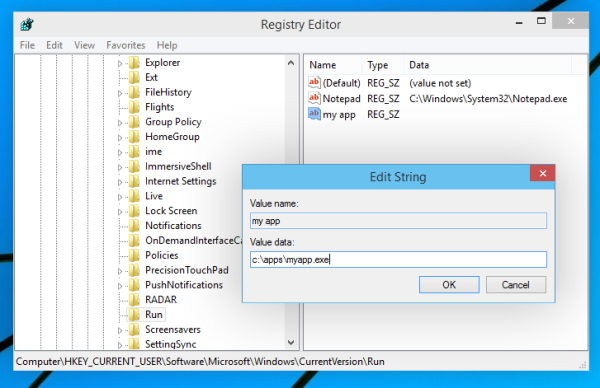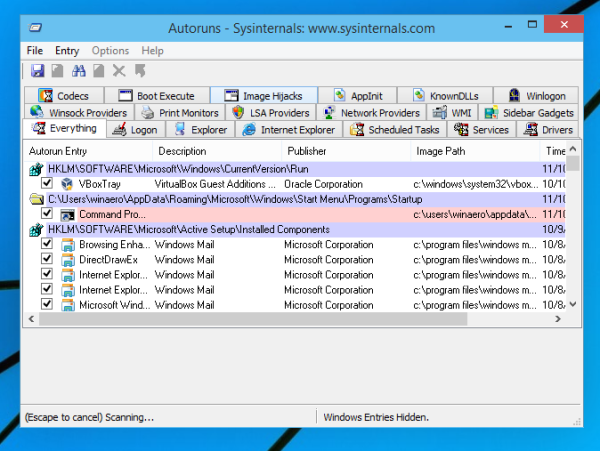-
Нажмите кнопку Пуск и прокрутите список, чтобы найти нужное приложение.
-
Щелкните приложение правой кнопкой мыши, выберите Дополнительно, затем Открыть расположение файла. Откроется папка, где сохранен ярлык приложения. Если параметр Открыть расположение файла отсутствует, это означает, что данное приложение не может автоматически запускаться при начальной загрузке.
-
Перейдя к папке с файлом, нажмите клавишу с логотипом Windows + R, напечатайте shell:startup, затем нажмите ОК. Откроется папка Автозагрузка.
-
Скопируйте и вставьте ярлык приложения из папки с файлом в папку Автозагрузка.
Узнайте, как изменить список приложений, автоматически запускаемых при начальной загрузке
Нужна дополнительная помощь?
Windows is designed to run applications and programs automatically as soon as you sign in to your user account. Some apps are automatically set to run at this point, while others can be manually added. This is a great feature if you repeat certain tasks daily, such as checking your email, opening a to-do document, etc.
When you perform a clean install of Windows, certain native applications are assigned to run as soon as you sign in. Here are a few common ones:
- Cortana
- OneDrive
- Microsoft Teams (Windows 11)
While some apps are added to support the auto-run feature, as they are installed on your system, such as the following:
- Skype
- Spotify
- Snagit
- Inter Driver and Support Assistant
However, some applications are not automatically launched. These need to be manually added to Windows startup, so they start automatically as soon as you sign in.
This article discusses how you can add certain apps and programs to the list so that they launch automatically.
Table of contents
- What is Windows Startup Folder
- Startup Folder Per User
- Startup Folder for All Users
- How to Add Programs to Startup using File Explorer
- Add Programs to Individual User Accounts Startup
- Add Programs to All User Accounts Startup
- Alternative Methods to Add Programs to Startup
- From Apps Folder
- Directly Inside Startup Folder
- How to Add Programs to Startup using Task Scheduler
- How to Add Programs to Startup using Windows Registry
- Add Programs to Startup for Individual User Accounts
- Add Programs to Startup for All User Accounts
- Disadvantages of Adding programs to Startup
- How to Disable Programs Auto Startup
- From Startup Folder
- From Windows Registry
- From Task Manager
- From Settings App
- Closing Words
What is Windows Startup Folder
The “Startup” folder is a directory inside Windows that contains a list of apps and programs that will run automatically as soon as the system boots up. This is the first place Windows looks to launch applications automatically.
With that said, there are 2 types of startup folders in Windows
Startup Folder Per User
As the names implicate, one of the startup folders defines the apps to launch automatically for a specific user account, whilst the latter defines the common apps and programs to launch automatically for all user accounts on the computer.
The location for the Startup folder for individual users can be found at the following location. You can open file location by copying and pasting it into the Windows Explorer address bar.
C:UsersUsernameAppDataRoamingMicrosoftWindowsStart MenuProgramsStartupThe data for these files is saved inside the Windows Registry on the following path:
ComputerHKEY_CURRENT_USERSOFTWAREMicrosoftWindowsCurrentVersionRunStartup Folder for All Users
In this folder, you will find apps that automatically run on your computer for all user accounts. These are mostly native Windows apps, such as Cortana, OneDrive, etc
The location for the common Startup folder for all users can be found at the following location:
C:ProgramDataMicrosoftWindowsStart MenuProgramsStartupThe data for these files is saved inside the Windows Registry on the following path:
ComputerHKEY_LOCAL_MACHINESOFTWAREMicrosoftWindowsCurrentVersionRunEach of these folders can be customized to add or remove apps that run automatically.
How to Add Programs to Startup using File Explorer
Add Programs to Individual User Accounts Startup
Let us now show you how to add applications and programs to the Startup folder for individual user accounts so that they will launch automatically when you log in:
- Start by creating a shortcut for the app that you want to run automatically. This can be done by right-clicking on an app and then clicking Create Shortcut from the context menu.
- You may be asked to “create a shortcut on the desktop instead.” Click Yes.
- Now, open the Run box by pressing the Windows Key + R shortcut keys on the keyboard.
- Type in the following inside the Run box to open the Startup folder for your current user account:
shell:startup - The Startup folder will now open using File Explorer. Drag and drop the shortcut you created in steps 1 and 2 above in this folder, or cut and paste it.
Now the next time you sign in to this user account, the app will launch automatically. You can repeat the steps above to add more programs and applications.
Add Programs to All User Accounts Startup
Perform the following steps if you want to add an app or program to launch automatically for all user accounts on your computer:
Note: Perform these steps while logged in from an administrative account.
- Start by creating a shortcut for the app that you want to run automatically. This can be done by right-clicking on an app and then clicking Create Shortcut from the context menu.
- You may be asked to “create a shortcut on the desktop instead.” Click Yes.
- Now, open the Run box by pressing the Windows Key + R shortcut keys on the keyboard.
- Type in the following inside the Run box to open the Startup folder for your current user account:
shell:common startup - The Startup folder, which is shared with all user accounts, will now open using File Explorer. Drag and drop the shortcut you created in steps 1 and 2 above in this folder, or cut and paste it.
The shortcut for the app pasted inside this folder will now be launched for every user on your PC.
Alternative Methods to Add Programs to Startup
The method of creating a shortcut for an app and then shifting it to the Startup folder is already discussed in the steps given above. However, there are more methods to do the same.
From Apps Folder
Shortcuts for some native applications, like the Calculator, Calendar, etc. cannot be created by using the conventional method discussed above. If you do not find an app to add to the Startup list, look inside the “Applications” folder, which can be opened by typing in the following in the Run box:
shell:appsfolderThis will open a folder displaying all your current apps on the computer. Here, right-click on the app you want to add to the Startup folder (either user Startup or common Startup) and click Create shortcut from the context menu.
You will be asked to create a shortcut on the desktop instead. Create it there and then move the shortcut to the respective Startup folder.
Directly Inside Startup Folder
You can also create a shortcut inside the Startup folder. Here is how:
Note: This method is only valid for adding an app to the user-specific Startup folder since the Common Startup folder does not allow you to create shortcuts directly.
- Open the Startup folder by typing in the following in Run:
shell:startup - Inside the Startup folder, right-click on an empty space, expand New from the context menu, and click Shortcut.
- From the Create Shortcut Wizard, click Browse and select the app you want to add to automatic startup. When selected, click Next.
- Now enter a name for the shortcut and click Finish.
The shortcut will now be added to the Startup folder and the selected app will launch each time you sign in to your account.
How to Add Programs to Startup using Task Scheduler
You can also schedule apps and programs to start automatically as soon as you sign in to your account using the Task Scheduler Management Console. However, this method only works for individual users, and not all the user accounts on your computer.
Perform the following steps to schedule an app start as soon as you log in:
- Open the Task Scheduler by typing in taskschd.msc in Run.
- From the left pane, right-click “Task Scheduler Library” and then click Create basic task from the context menu.
- From the Create basic task wizard, enter a name for the task and click Next.
- In the next window, select “When I log in” and click Next.
- Select “Start a program” and click Next.
- In the next window, click Browse and then select the app that you want to run automatically. When selected, click Next.
- On this screen, ensure all configurations are correct and click Finish.
The selected application will now launch automatically each time you log in to this user account.
If you wish to remove the app from launching automatically, simply delete the task from the Task Scheduler.
How to Add Programs to Startup using Windows Registry
The methods discussed below involve manual changes to the Windows Registry. Misconfiguration of critical values in the system’s registry could be fatal for your operating system. Therefore, we insist that you create a system restore point before proceeding with the process.
Add Programs to Startup for Individual User Accounts
The steps below guide you on how to add an app or program to the Startup list for individual user accounts using the Windows Registry Editor:
- Open the Registry Editor by typing in regedit in Run.
- Now paste the following into the address bar at the top for quicker navigation:
ComputerHKEY_CURRENT_USERSOFTWAREMicrosoftWindowsCurrentVersionRun - Right-click Run from the left pane, expand New from the context menu, and then click String value.
- Name the string whatever you want. It is recommended that you give it a name so that it defines the program you are about to add to the Startup list.
- Open the created new string and enter the complete path of the app you want to run automatically under Value Data. Then click Ok.
- Now restart your computer for the changes to take place.
When the computer reboots, you will see that the selected app will now run automatically.
Add Programs to Startup for All User Accounts
You can follow a similar procedure to add an app for automatic startup in Windows with Windows Registry for all user accounts on your computer. Here is how:
- Open the Registry Editor by typing in regedit in Run.
- Now paste the following into the address bar at the top for quicker navigation:
ComputerHKEY_LOCAL_MACHINESOFTWAREMicrosoftWindowsCurrentVersionRun - Right-click Run from the left pane, expand New from the context menu, and then click String value.
- Name the string whatever you want. It is recommended to name it something, so that it defines the program you are about to add to the start list.
- Open the new string created, and enter the complete path of the app that you want to run automatically under Value Data. Then click Ok.
- Now restart your computer for the changes to take place.
Disadvantages of Adding programs to Startup
You must already know the advantages of adding applications and programs to the Startup folders in Windows. However, there is also a drawback to doing so.
Apps that launch automatically will try and open simultaneously when the computer boots up. This will exert a load on the system resources (CPU and RAM) which may affect other critical Windows startups, such as background services and apps.
Therefore, adding more apps to the Startup folders will increase the overall time it takes for your PC to become fully operational.
We suggest that you only add applications and programs for an automatic startup that are essential, and remove or disable all others.
How to Disable Programs Auto Startup
From Startup Folder
If you have manually added an app or program to the Startup folder for it to launch automatically, then it needs to be removed from the folder to prevent that specific app from launching itself. It can be done using the following method:
- Type in the following in the Run box to open the respective Startup folder:
- For specific user:
shell:startup - For all users:
shell:common startup
- For specific user:
- Here, right-click on the app that you want to disable from launching automatically and click Delete from the context menu.
The app will now no longer launch automatically when you sign in.
From Windows Registry
If you previously added an app to launch automatically from the Registry Editor, then the respective registry will need to be deleted to remove the app from launching at startup. Here is how:
- Launch the Registry Editor by typing in regedit in Run.
- Now paste the respective path into the address bar at the top:
- For specific user:
ComputerHKEY_CURRENT_USERSOFTWAREMicrosoftWindowsCurrentVersionRun - For all users:
ComputerHKEY_LOCAL_MACHINESOFTWAREMicrosoftWindowsCurrentVersionRun
- For specific user:
- Here, right-click on the string value from the left pane and click Delete from the context menu.
- Now restart your computer for the changes to take effect.
From Task Manager
You can disable applications from starting up automatically through the Task Manager. Here is how:
- Open the Task Manager using the CTRL + Shift + Esc shortcut keys, and then switch to the Startup tab.
- Here, select the app that you want to disable and then click Disable from the bottom of the window.
From Settings App
To disable applications from launching automatically at Windows startup, perform the following steps:
- Navigate to the following location:
Settings app >> Apps >> Startup - Here, toggle the slider in front of the app that you want to disable into the Off position.
This will now prevent the app from starting automatically. If you want to resume the feature, simply toggle the slider again into the On position.
Closing Words
The automatic Startup feature in Windows is sometimes a blessing in disguise, especially if you use the same applications daily. However, you must use it wisely and only add the apps and programs required, so it does not affect your system’s performance.
If you have many apps that start up automatically and are no longer in use, we suggest that you disable them using any one of the methods discussed above in this post.
Also see:
Subhan Zafar is an established IT professional with interests in Windows and Server infrastructure testing and research, and is currently working with Itechtics as a research consultant. He has studied Electrical Engineering and is also certified by Huawei (HCNA & HCNP Routing and Switching).
Not all programs have such an option in their settings that lets you enable or disable its automatic start when you turn on your PC.
But you may want to add apps and programs to startup in Windows 11 and Windows 10 and make them automatically launch when the PC boots up to a user account.
By the way, it’s not only about apps. You can do the same even with a document, URL address or folder if you need.
Here is an ultimate guide on how to find the startup folder for a particular user or for all users and make any program run at startup in Windows 11/10.
[Quick Navigation]:
- Windows 11/10 startup folder location
- 2 methods to open it
- manage startup programs for the current user (+video)
- for all users
- alternative method
- modern apps
- remove apps from Windows 10 startup (+video)
- Task Scheduler
- Registry Editor
- Autoruns Sysinternals
Before we start explaining the boring process, it should be mentioned that some programs have a special option in their settings called “load when Windows starts”, “launch when system starts” or something alike.
Thus, all you need to do is go to the program’s setting, enable the auto-start option and that’s all. No shortcuts needed:
For programs that don’t have such parameter read the rest of the tutorial on how to find the startup folder and change startup programs in Windows 11/10.
Note that in the latest versions of Windows 10 all programs that were running at the moment when you shut down or rebooted your computer, automatically start the next time you log in.
This in any case doesn’t mean that those programs are added to Windows startup folder, scheduler, or whatever. This is a standalone feature of Windows 10 which is enabled by default.
If you want to add a program, app, URL or document to startup you should place its shortcut to user startup folder. By default it is located in:
C:UsersUsernameAppDataRoamingMicrosoftWindowsStart MenuProgramsStartup
How to Quickly Open the Startup Folder in Windows 11, 10, 8, 7
Method 1
Method 2
Another way to open Windows startup folder is to use the Run dialogue:
- Press Win+R
- Type
shell:startup
- Click OK or press Enter:
How To Add Programs To Startup In Windows 11/10 For The Current User
You may put shortcuts to various items into this directory. But be cautious: adding too many programs to the startup folder can make your PC boot slowly (especially if you are still using a classic hard disk drive as your system disk).
Perform the following steps:
STEP 1. Open the Startup Folder using any method explained above.
STEP 2. Copy a program, app, folder, document, link or anything else:
STEP 3. Paste the shortcut to startup folder:
This is how it should look like:
The same steps in the video guide:
Add a Startup Program For All Users At Once
If you wish to set a program to run on startup for all users accounts, create its shortcut in common startup folder. In Windows 11/10 its default location is:
C:ProgramDataMicrosoftWindowsStart MenuProgramsStartUp
You can open it by the path: %ProgramData%MicrosoftWindowsStart MenuProgramsStartUp or using the Run dialogue as we explain below.
- Press Win+R.
- Type
shell:Common Startup
- Press Enter:
- Copy the executive file or document.
- Use Paste or Paste shortcut to place one to Common startup folder:
Alternative Method To Create A Shortcut In Windows 10 & 11` Startup Folder
- Right-click the empty area and select New -> Shortcut:
- Browse the file or folder or enter URL and press Next:
- Give a name to your new shortcut and press OK:
How to Make Modern Apps Run on Startup in Windows 11 & 10
You can also add Modern apps from Microsoft Store to startup folder. Follow the steps:
-
- Open the startup folder: press
Win+R, typeshell:startup, hitEnter. - Open the Modern apps folder: press
Win+R, typeshell:appsfolder, pressEnter. - Drag the apps you need to launch on startup from the first to the second folder and select Create shortcut:
- Open the startup folder: press
Now restart your computer and check if your program, app or another item you specified runs correctly as you log in to the user account (or as soon as your PC signs in automatically as we explained here).
How to Disable Startup Apps in Windows 11 / 10
As you might know, the more apps are added to startup, the longer you have to wait before you start using your PC.
That’s why users often apply the following steps to disable unnecessary programs from being launched at log in.
Here is how to stop programs from running at startup in Windows 11 & 10.
Method 1: Use Settings
- Press Win+I on your keyboard to launch Windows 10 Settings;
- Dive into the Apps category:
- Select Startup in the left pane;
- Disable apps you don’t want to be launched when you log in to your user account:
Method 2: Use Task Manager
- Right-click the Taskbar and click Task Manager:
- Go to the Startup tab;
- Select the app you wish to disable from auto launching;
- Click Disable:
Here is the video guide:
Add or Remove Startup Apps / Programs in the Task Scheduler
The simplest way to open the Task Scheduler in Windows 11 (10) is to press “Win+R”, type “taskschd.msc” and hit “Enter”.
Here you can look through the list of auto-start items, add new or remove existing. Using the Task Scheduler requires some experience. So, be careful while using it.
If you are not sure what to do with a certain startup item, first opt to “Disable” it and check the result rather than “Delete”.
Use Registry Editor to Manage Windows Startup Apps & Programs
The system registry is yet another way to add or remove auto-start apps in Windows 11 & 10. Feel free to use it if this option is more preferable.
Launch the registry editor: press “Win+R”, type “regedit” and hit “Enter”.
Navigate to
HKEY_CURRENT_USERSOFTWAREMicrosoftWindowsCurrentVersionRun
Here you will see all programs that start when the current user logs in.
If you didn’t find the app you expected, check another registry key responsible for the common startup (for all users on the current PC):
HKEY_LOCAL_MACHINESOFTWAREMicrosoftWindowsCurrentVersionRun
How to Add Programs to Startup Using the Registry Editor
First, you need to decide either you want to run the program when the current user logs in, or all users on the computer at once. Depending on your decision, navigate to the one of the mentioned above registry keys.
Then, in the right part of the Registry Editor window right-click on the empty area and select New > String value
Give it a name, enter the path to the program you wish to add to Windows 10 startup and click “OK”.
Manage Startup Apps & Programs Using the Autoruns Utility
Sysinternals Autorun is a free utility that you can download from its official website https://docs.microsoft.com/en-us/sysinternals/downloads/autoruns
It doesn’t require the installation – you need just to launch the exe file.
With the help of the Autoruns utility you can:
- view the list of everything that automatically starts on your PC and remove startup items;
- use the Jump to Image option to reveal the location of the program;
- use the Jump to entry option to find out the way how the particular program added to auto-start (startup folder, registry key, scheduler, etc);
- scan startup items for viruses using VirusTotal in 1 click and see the result in the corresponding field of the program;
- and much more.
The Conclusion
If you know how to achieve the same result in easier ways, please drop a comment below. We will also be very grateful if you share this article on social networks. Thank you and good luck!
Read next: How to turn off the password request in Windows 10, 8, 7
79
79 people found this article helpful
Launch your favorite apps every time you boot up
What to Know
- Open the Run dialog box, enter shell:startup, then right-click inside the Startup folder and select New > Shortcut to add a program.
- If you can’t find the app, enter shell:appsfolder in the Run dialog box, then drag apps from that folder into the Startup folder.
- Some apps offer a ‘run at startup’ option, which is an easier way to add a program to startup in Windows 10.
This article explains how to add a program to startup in Windows 10. Applications that are designated as startup programs are launched as Windows 10 boots.
How to Add Programs to Startup in Windows 11
How to Add Programs to Startup in Windows 10
You can enable or disable apps from running on startup in the App Startup Control Panel and the taskbar, but the only place you can add new startup programs is through the Windows startup folder.
Some modern apps have a ‘run at startup’ capability built into their options. If your app has that option, then turning it on is a lot easier than the following method, which is designed to work with all programs.
-
Press the Windows key+R to open the run dialog box.
-
Type shell:startup in the run dialog box and press Enter on your keyboard.
-
Right click in the startup folder and click New.
-
Click Shortcut.
-
Type the location of the program if you know it, or click Browse to locate the program on your computer.
If you can’t find your app, try opening the run dialog box back up and typing shell:appsfolder. You can drag any app from that folder into the startup folder to instantly create a shortcut.
-
Click Next.
-
Type a name for the shortcut, and click Finish.
-
Create additional links for any other programs you want to run automatically when Windows starts.
-
Restart your computer, and the new programs will launch automatically.
What Is the Windows Startup Folder?
The Windows startup folder is a folder that Windows looks in for programs to run every time it starts. This was the only way to manage startup programs in older versions of Windows. Adding a program shortcut causes that program to launch when Windows starts, and removing a program shortcut stops it from launching when Windows starts.
While Windows 10 has moved to the newer app startup control panel as the primary way to manage which apps, the startup folder remains the best way for users to add their own startup programs.
Drawbacks to Adding Programs to the Startup Folder in Windows 10
The benefits of adding programs you use every day to the Windows 10 startup folder are obvious. Instead of waiting for Windows to start up and then manually clicking on everything you launch every day, all you have to do is turn your computer on and wait for everything to load.
The issue is that it takes time for programs to load along with Windows, and every program you load takes up resources like memory and processor power. Load too many unnecessary programs, and you’ll find that Windows 10 starts slow and may even remain sluggish after loading everything.
If you change your mind about programs you’ve added to the startup folder, you can simply delete the shortcuts to prevent those programs from launching whenever you turn on your computer. You can also change startup programs in Windows 10 using the task manager or the startup app control panel.
What to Do If You Have Too Many Windows 10 Startup Programs
If you have some essential programs that you use for work every day, or you mainly use your computer to play a specific game, try adding the programs that are important to you and then removing programs you don’t ever use.
Your computer probably came with bloatware you never actually use, and applications are often set to run when Windows starts up even if you don’t want them to. Disable those startup programs, add the ones you want, and you’ll enjoy both convenience and faster startup times.
FAQ
-
How do improve startup time in Windows 10?
To improve startup time in Windows 10, disable startup programs, run an anti-virus scan, disable hardware you don’t use, upgrade your RAM, or switch to an SSD.
-
How do I change my home page in Windows?
To change your home page in Microsoft Edge, go to the three-dot menu > Settings > On startup > Open a Specific page or pages > Add a new page. In Chrome, go to the three-dot menu > Settings > Show home button > Enter custom web address.
-
How do I access Windows Advanced Startup Options?
To access Windows Advanced Startup Options, hold down the Shift key and restart your computer. Keep holding Shift until you see the Advanced Startup Options menu. Alternatively, go to the Recovery options in Windows Settings.
-
How do I add shortcuts to my Windows 10 desktop?
To add desktop shortcuts, right-click anywhere on the desktop, then select New > Shortcut > Browse. You can use desktop shortcuts to access applications, navigate to a website, or open a file.
Thanks for letting us know!
Get the Latest Tech News Delivered Every Day
Subscribe
It is possible to make any App, Program or File to automatically startup with your computer. This can be done by adding the App or Program to the Startup Folder on your Windows computer.
Add Apps & Programs to Startup in Windows 10/11
The main reason for adding an App, Program or File to Startup is to make that particular App, Program or File to Automatically startup with the computer and become available for immediate use.
For example, if the first thing that you do every morning is to check Emails, you can make Microsoft Outlook to automatically startup with the computer and be ready for your use.
Similarly, if you are likely to work most of the times on a particular Microsoft Excel File, you can Add this File to Startup and make it available for use, as soon as you open the computer.
1. Add Program to Startup Using Task Manager
Perhaps the easiest way to Add an App or Program to Startup in Windows 10/11 is to launch the program on your computer and use Task Manager.
1. Open the Program that you want to Add to Startup, either by clicking on its Desktop Icon (if available) or from Startup Menu.
2. Next, right-click on the Start button and select Task Manager in WinX menu.
Note: You can also launch Task Manager by right-clicking anywhere on the Taskbar and selecting Task Manager in the menu.
3. On Task Manager screen, switch to Startup tab, right-click on the program that you would like to add to Startup and select Enable option in the contextual menu.
After this, you will now find this particular program Starting up automatically along with your computer.
2. Add Program to Startup Folder Using Run Command
Another way to Add an App or Program to Startup on a Windows computer is to open the Startup Folder on your computer and drag the App or Program Icon to this Folder.
1. Right-click on the Start button and click on Run.
Note: You can also open Run Command by using Win+R keyboard shortcut.
2. In Run Command window, type shell:startup and click on OK to open the Startup Folder on your computer.
3. Next, open Run Command again > type shell:appsfolder and click on OK to open the modern Apps folder on your computer.
4. In the Apps Folder, locate the App that you want to Startup with your computer and drag it to the Startup Folder.
This will make this particular App to automatically launch, as soon as you start the computer and be ready for your use.
3. Add Excel or Word File to Startup in Windows 10/11
The procedure to Add any Microsoft Excel, Word or any other File to Startup is the same as adding any App or Program to Startup Folder on a Windows computer.
1. Right-click on the File and click on Create Shortcut option in the contextual menu.
2. Next, open Run Command > type shell:startup and click on OK to open the Startup Folder.
3. Now, drag the Shortcut that you had created into the Startup Folder.
Note: You can also use Copy/Paste or Cut/Paste commands to copy the shortcut into the Startup Folder.
- How to Stop Setup OneDrive Popup in Windows 10/11
- How to Stop Apps from Running in Background in Windows 10
Many PC users out there are under the impression that apps and programs that feature an option to load with Windows can only be run at startup. The fact is, you can make any app or program to start with Windows.
Making an app or program start with Windows 10 is quite easy. You just need to add the app or program to the startup folder to make them automatically start with Windows. The feature comes in handy if you want to launch your favorite programs with Windows 10 automatically.
In this guide, we will see how to add programs and apps to startup folder in Windows 10.
Method 1 of 2
To add programs to startup, refer to instructions in Method 2 given below.
Step 1: First of all, you need to create a shortcut to the app that you would like to add to startup in Windows 10. To do so, simply drag and drop the app from the Start to the desktop are to create a shortcut to the app on the desktop.
Step 2: Now, open Run command box by simultaneously pressing Windows logo and R keys (Windows logo + R). In the Run command field, type shell:startup and then press Enter key to open Startup folder.
Step 3: Finally, copy and paste or cut and paste the app shortcut from the desktop to this Startup folder to add the app to startup. That’s it!
From now on, whenever you turn on your PC, the app will be automatically launched soon after you see the desktop. For instance, if you add Mail app to startup, Windows 10 will automatically open the Mail app once the boot is complete.
Add classic desktop programs to startup in Windows 10
Step 1: Just like apps, you need to create desktop shortcuts to programs first. To create a desktop shortcut to a program, search for the program using Start/taskbar search, right-click on the search entry, click Open file location, right-click on the program entry, click Send to and then click Desktop (create shortcut) option.
Step 2: Open Run command box using Windows logo + R keyboard shortcut. You can also type Run in the Start/taskbar search and then press Enter key to open Run command.
Step 3: In the Run command box, type shell:startup, and then press Enter to open the startup folder.
Step 4: Finally, copy and paste, or cut and paste the program shortcut on the desktop to the startup folder. That’s it!
To remove a program from startup, please refer to our how to remove programs from Windows 10 startup guide.
The more apps you install on your computer, the longer it will take to start up Windows. This is because many apps load at startup and slow down the boot process. The longer that list gets, the slower your OS loads after a restart or shutdown. In this article, we will review some basic ways to manage startup apps in Windows 10 so your OS remains more responsive. This article is also applicable to Windows 8.1 and Windows 8.
Update: Starting with Windows 10 build 17017, there is a special page in Settings to manage startup apps. You can find it under Settings — Apps — Startup. See the following screenshot:
To manage startup apps, you need to review all of them so you can turn off the ones you don’t want. This can be done via Task Manager in Windows 10. All you need to do is to open the Task Manager app and go to the Startup tab:
Tip: You open the Startup tab of Task Manager directly in Windows 10 by running the following command:
taskmgr /0 /startup
Press Win + R shortcut keys together on the keyboard and type the command mentioned above in the Run box. See the following article for more details: How to open the Startup tab of Task Manager directly in Windows 8.
On the Startup tab you will see the full list of apps which start with Windows.
Tip: You might be curious how Task Manager calculates the «Startup Impact» of Apps.
Using the Startup tab of Task Manager, you can easily prevent an app from starting with your OS. It is very easy — just right click the desired app and pick «Disable» from the context menu.
To enable the disabled app, you just need to right click it again and choose the «Enable» command from the context menu.
Now you know how to enable or disable startup apps. Let’s see how to add a new app to load at startup or remove an existing one.
How to add or remove startup apps for the current user
Startup items for the current user are stored usually at two locations: the Registry and the special «Startup» folder. The Startup folder is an easier way to manage apps. To add or remove an app from the Startup folder, you need to do the following:
- Press Win + R shortcut keys together and type the following into the Run box:
shell:Startup
The text above is a special shell command which will open the Startup folder for you directly.
The Startup folder is located here:
C:UsersYour user nameAppDataRoamingMicrosoftWindowsStart MenuProgramsStartup
Just copy and paste a shortcut in this folder so that the app loads when Windows boots. To remove the application from the Startup folder, delete the appropriate shortcut.
That’s it!To add or remove startup apps for the current user from the Registry, you need to follow the instructions below:
- Open Registry Editor.
- Go to the following key:
HKEY_CURRENT_USERSoftwareMicrosoftWindowsCurrentVersionRun
- There you will find startup items for current users which are stored in the Registry:
To delete an item, right click it and choose Delete from the context menu:To add a new startup item, you need to create a new string value with any desired name and set its value data to the full path of the application which you want to load at startup:
How to add or remove startup apps for all users
The method is pretty much the same as adding an app for a single user. The Startup folder and Registry key are different for All users.
To add or remove startup items for all users via the Startup folder, type the following shell command in the Run dialog:
shell:Common Startup
The following folder will be opened:
C:ProgramDataMicrosoftWindowsStart MenuProgramsStartup
There you can add or remove shortcuts for any app you want. Shortcuts from this folder will start with Windows for all users of your PC.
As for the All Users Registry key, you will need to go to the following key:
HKEY_LOCAL_MACHINESOFTWAREMicrosoftWindowsCurrentVersionRun
Here you need to create or delete string values as described above. The value name can be anything but the value data must contain the full path to the executable (.EXE) of the app that you wish to run at startup.
That’s it. For advanced management of startup apps, I recommend you to take a look at the excellent SysInternals Autoruns tool:
The Autoruns app is the most comprehensive startup management app and covers all locations. It not only allows you to manage Startup apps but also many other objects including shell extensions which load with the Explorer shell, Scheduled tasks, system services and other system components.
Add an app installed from the Windows Store to Startup
If you want to add an app installed from the Windows Store to Startup, you cannot use traditional methods. See how it can be done in the following article:
How to Add Store Apps to Startup in Windows 10
That’s it.
Support us
Winaero greatly relies on your support. You can help the site keep bringing you interesting and useful content and software by using these options:
If you like this article, please share it using the buttons below. It won’t take a lot from you, but it will help us grow. Thanks for your support!
В Windows 10 автозапуск программ и приложений, в соответствии с названием, контролирует автоматический запуск программ вместе с системой, тем самым упрощая работу с ними, но замедляя общее время полной загрузки системы. Чем больше приложений запускается с ОС, тем медленнее будет происходить её загрузка. В этой статье мы рассмотрим все возможные варианты настройки автозапуска программ Windows 10, как добавить и изменить программы, а также сторонние приложения для управления этой настройкой.
Настройка автозагрузки
Для начала разберем, как и где отключить автозапуск программ и приложений в Windows 10. Вы можете контролировать автозапуск используя системные настройки – окно Параметры Windows, диспетчер задач, папка автозагрузки или реестр системы. Разберём каждый вариант отдельно.
Параметры Windows 10
Начиная с версии системы Windows 10 под номером 1803, в параметрах Windows можно найти настройку автозагрузки приложений.
Чтобы открыть эти настройки, выполните следующее:
- Пройдите в Параметры Windows (нажмите на кнопку «Пуск» и нажмите на иконку шестерёнки) или нажмите сочетание клавиш Win+i.
- Пройдите в настройки «Приложения» и откройте вкладку автозагрузка
- На этой странице вы можете увидеть список приложений, которые включены в автозапуск, вместе с стартом Windows, их влияние на скорость загрузки, а также статус – включен или отключен.
Этот вариант отсутствует у пользователей версии Windows 10 1709 и ниже, так как был добавлен только в первом обновлении 2018 года. Если у вас такого пункта нет, обновите Windows 10 или используйте следующий способ – диспетчер задач.
Диспетчер задач
В Windows 7 автозапуск и его настройки, находились в окне Конфигурация системы, вместе с быстрыми доступами к службам (в Windows 10 они там и остались). Сейчас, начиная с Windows 8, эти настройки перекочевали в диспетчер задач. Если вы не знали, как включить автозапуск программ в Windows 10 наиболее простым способом, то этот вариант вам отлично подойдёт.
Для этого выполните следующее:
- Для открытия диспетчера задач, вам необходимо нажать одновременно клавиши «Ctrl+Shift+Ecs», или откройте окно быстрых настроек (нажмите сочетание Win+X) и выберите соответствующий пункт. Альтернативный вариант, вызвать окно блокировки и нажать на Диспетчер задач.
- Если окно имеет режим миниатюры и не отображает никакой информации, кроме открытых приложений, нажмите кнопку «Подробнее».
- Пройдите во вкладку «Автозагрузка», где вы сможете произвести отключение автозапуска программ в Windows 10 и настроить его..
В диспетчере задач вы можете увидеть производителя того или иного приложения, которое запускается с системой, а также воспользовавшись функцией «Поиск в Интернете» найти нежелательное ПО или вирус, который может мешать корректной работе системы. Продолжаем изучать возможности системы и переходим к папке автозапуска.
Папка Автозагрузка
Данная папка позволит узнать, как сделать автозапуск программы в Windows 10 самостоятельно и поставить нужное вам приложение. Стоит быть осторожным и не добавлять особо производительные приложения или игры, чтобы не нагрузить систему при её запуске.
Для того, чтобы открыть папку автозапуска, следуйте шагам:
- Откройте следующее расположение: «C:Users*Ваш_пользователь*AppDataRoamingMicrosoftWindowsStart MenuProgramsStartup»
- Или же можно воспользоваться таким способом, как открыть автозапуск программ на Windows 10 через командную строку. Для этого в окне Выполнить (Win+R) наберите shell:startup и нажмите ОК
- Во многих случаях папка будет пустая, так как программы прописывают автоматический запуск приложений в реестре системы, но это будет описано в следующем варианте.
- Чтобы добавить желаемое приложение, создайте ярлык исполнительного файла с места расположения (Например, из папки Program Files) или скопируйте ярлык с рабочего стола в эту папку. При следующей загрузке системы, ярлык добавленный в эту папку будет также запущен.
Перейдём к последнему, наиболее сложному для простого пользователя, способу – реестр системы.
Реестр Windows
Если вы не знаете, где найти управление автозапуском программ в Windows 10, то этот пункт вам поможет. Реестр содержит в себе все настройки системы, в виде древовидной базы данных со своими параметрами и значениями. Тут настраивается автозапуск как для конкретных пользователей, так и для всей системы Windows в целом.
- Для начала откройте окно Выполнить (Win+R), наберите regedit и нажмите OK.
- Далее автозапуск для конкретного пользователя, находится в ветке HKEY_CURRENT_USERSoftwareMicrosoftWindowsCurrentVersionRun
- Чтобы открыть настройки автозапуска всех пользователей, откройте этот же путь только в корне HKEY_LOCAL_MACHINE
- Как мы видим, количество и приложения тут разные. Какие-то устанавливались для конкретного пользователя, другие для всей системы.
- В значении каждого параметра указываются исполнительные файлы конкретных программ. Иногда может встречаться ссылка на интернет ресурс, чаще всего это рекламный вирус, его нужно удалить.
- Вы можете создать свой параметр с типом REG_SZ и указать в значении ссылку на нужное приложение, но, если вы ранее не работали с реестром, лучше вам воспользоваться прошлым способом – папка автозапуска.
Ознакомившись со средствами системы, перейдём к сторонним программам. Самым удобным будет – Ccleaner, а самым многофункциональным – Autoruns.
Сторонние приложения
Для некоторых пользователей, интерфейс стандартных приложений системы может быть сложным, особенно редактор реестра. Поэтому будет полезны программы с удобным и понятным интерфейсом.
CCleaner
Приложение оптимизатор и «чистильщик» системы. Очень популярное и мощное решение от компании Piriform. С этой утилитой вы узнаете, как можно просто оптимизировать и очистить систему или же как быстро убрать автозапуск программ или планировщика на Windows 10, без особых усилий.
Скачать CCleaner можно бесплатно с официального сайта.
Чтобы отобразить автозапуск, выполните следующее:
- Откройте CCleaner и пройдите во вкладку «Сервис»
- Откройте вкладку «Автозагрузка»
Вы можете редактировать автозапуск, запланированные задачи, а также выключать или удалять приложения из контекстного меню. Это только малый список возможностей CCleaner, основной функционал направлен на очистку и оптимизацию системы. Программа, основной функционал которой направлен на отображение и редактирование работы стороннего и встроенного ПО – Sysinternals Autoruns.
Autoruns
Autoruns – утилита с огромным потенциалом для анализа системы, которая позволяет отобразить наиболее полную информацию о запускаемых программах. С помощью этой утилиты, вы можете не только оптимизировать работу системы, отключив ненужные программы автозапуска, но и проанализировать систему на наличие вредоносного ПО (вирусы, трояны и малвари).
Как пользоваться Autoruns:
- Загрузите утилиту с официального сайта Microsoft – прямая ссылка (ссылка с описанием)
- Распакуйте загруженный архив и откройте утилиту Autoruns или Autoruns64, в зависимости от разрядности вашей системы (64 или 32-битная). Утилиту следует открывать от имени Администратора, чтобы использовать полный функционал поиска.
Разберем основные вкладки утилиты:
- Вкладка «Logon» отображает программы, которые запускаются при входе в профиль системы. Автозапуск сторонних приложений и утилит.
- Вкладка «Explorer» содержит в себе значения для контекстного меню, а именно отображаемые приложения для работы с конкретными форматами. Например, при нажатии ПКМ по файлу с .rar форматом, вам будет предложено распаковать или открыть данный файл с использованием WinRar, 7zip или другим установленным архиватором. Эти приложения и будут присутствовать во вкладке «Explorer».
- «Scheduled Tasks» — запланированные задачи конкретного ПО.
- «Services» службы Microsoft и стороннего ПО
- «Drivers» — драйвера для оборудования вашего устройства
Настройки этой утилиты не столь богаты, так как вся информация уже сразу отображается при открытии, а пользователь лишь фильтрует и анализирует полученные результаты. Именно потому неподготовленному пользователю будет сложно ориентироваться в Autoruns.
Всего фильтра 4:
- Hide Empty Locations – по умолчанию включена и исключает из выдачи пустые значения, которые не столь необходимы и не несут важной информации.
- Hide Windows Entries — по умолчанию включена и скрывает стандартные системные утилиты, так как тоже могут мешать анализу.
- Hide Microsoft Entries – скрывает ПО от Microsoft, например Office.
- Hide VirusTotal Clean Entries – очень полезный фильтр для поиска вредоносного ПО в системе. Данный фильтр скрывает из выдачи значения, которые по мета данным VirusTotal не являются вредосносным ПО или вирусом. (Для этого необходимо включить значение Check VirusTotal.com). В моём случае, было выявлено 2 угрозы – приложение для удалённого подключению к ПК TeamViewer и утилита создания быстрых скриншотов LightShot. Только один антивирус из 69 посчитали это ПО вредоносным, поэтому я могу считать, что это погрешность, так как эти приложения были скачаны с официальных источников.
Autoruns не только позволяет узнать, как посмотреть автозапуск программ в Windows 10, но и зайти в реестр и проанализировать работу всех приложений.
На деле, пускай вас не пугает странный интерфейс этого приложения. В трудных ситуациях, когда даже антивирус не справляется, Autoruns позволяет определять и анализировать автозапуск вредоносных модулей и в дальнейшем удалять их, без вреда Windows. Главное детально разобраться.
Дополнительно
Разберем также моменты, когда не работает автозапуск программ Windows 10, какие приложения следует отключать, а какие нет и стоит ли это делать вообще.
- Не работает автозапуск программ
Причин, по которым может не работать автозапуск — несколько, разберём наиболее частые:
- Приложение не запускается, хотя включено в автозапуск.
Убедитесь, что запуску приложения не мешает антивирус. Также, попробуйте удалить значение из реестра и создать его снова. На крайний случай, попробуйте переустановить программу. Антивирус «Защитник Windows» работает в рамках системы, как отдельный компонент, он не препятствует работе программ из автозапуска.
- Я добавил приложение в автозапуск, а оно не запускается.
На моей памяти, главной ошибкой в этом случае была невнимательность. Убедитесь, что в папку автозапуска добавляется Ярлык приложения, а не исполнительный файл (кроме случаев утилит, которые и являются исполнительными файлами). А в Реестре указывается путь именно к исполнительному файлу, а не ярлыку.
- Программа автоматически загружается, даже когда я везде его отключил.
Обратите внимание, что Антивирусы и программы защиты, обладают системой самозащиты и имеют повышенный приоритет у системы, который не позволяет просто так отключить защиту системы. Вам поможет отключение данной функции в настройках антивируса или же удаление ПО.
Для оптимальной работы Windows необходимо, чтобы работали не только стандартные службы системы, но и ПО, обеспечивающее корректную работу оборудования, именно поэтому Intel и AMD создают утилиты, которые поддерживают работу оборудования на оптимальном уровне. К этому относятся утилиты слежения за питанием, температурой, звуком, видеокартой и остальным. Поэтому не рекомендуется отключать программы и утилиты производителя оборудования или драйверов устройства, чтобы не мешать корректной работе.
Исключение составляют конфликты и ошибки тех самых приложений. Например, после обновления Windows 10 до новой сборки и пользователя пропал звук, а при чистой загрузке (без стороннего) ПО звук присутствовал. Проблема была в приложении Realtek старой версии, которая конфликтовала с новой версией системы, проблема была решена установкой последней версией драйвера звука.
В этой статье вы узнали, как выключить автозапуск программ в Windows 10, отменить или добавить ПО в автозагрузку, а также разобрали сторонние приложения и основные проблемы, с которыми сталкиваются пользователи. Если у вас возникнут сложности или вопросы, будем рады вам помочь в комментариях.
Отличного Вам дня!
Разработчики из Microsoft постарались сделать все возможное, чтобы взаимодействие с компьютером приносило пользователю исключительно положительные эмоции. Для этого они потрудились над оптимизацией рабочего процесса, предложив владельцам ПК добавить программу в автозагрузку на Windows 10.
Далее разберемся, для чего нужна эта функция, и как ею можно воспользоваться.
Работая за компьютером, пользователь прибегает к помощи самых разных программ. Некоторые из них используются на постоянной основе (например, антивирус или браузер). Чтобы приложение начало работать, его нужно самостоятельно запустить, а это не всегда бывает удобно. Зачастую человек попросту забывает о включении нужной программы.
Решение проблемы возможно при помощи автозагрузки. Это специальная область файловой системы, которая позволяет открывать приложения автоматически после запуска операционной системы. То есть, когда вы включаете компьютер, такой софт автоматически начинает работать.
Совет. Функция автозагрузки негативным образом сказывается на скорости включения ПК. Поэтому, если вы обладаете слабым устройством, постарайтесь уменьшить количество приложений, работающих по такому принципу.
Где находится автозагрузка
Каждый пользователь должен знать, какие программы работают в режиме автозагрузки. На предыдущих версиях ОС ознакомиться со списком приложений, добавленных в специальную область файловой системы, можно было через соответствующую папку в меню «Пуск». С обновлением до Windows 10 подобная опция была ликвидирована. Однако папка никуда не исчезла. Ее просто спрятали.
Каталог с приложениями, добавленными в автозагрузку, располагается в директории «C:UsersUsernameAppDataRoamingMicrosoftWindowsStart MenuProgramsStartup». Обратите внимание, что нужная папка может не отобразиться. Для ее активации понадобится включить отображение скрытых элементов в Проводнике.
Если найти интересующий каталог все равно не получается, обратитесь к альтернативной инструкции:
- Зажмите клавиши «Win» + «R», чтобы запустить исполняемое окно «Выполнить».
- Введите запрос «shell:startup».
- Нажмите на кнопку «ОК» или клавишу «Enter».
После выполнения указанных действий откроется окно Проводника, содержащее в себе искомую папку. Здесь вы можете ознакомиться со списком автоматически запускаемых приложений. В то же время добавить новую программу в автозагрузку не получится. Для выполнения этой операции используется другая инструкция.
Как добавить приложение в автозагрузку
Несмотря на то, что пользователь лишен возможности активировать автоматический запуск программы путем добавления ее ярлыка в соответствующую папку, у него остается несколько довольно простых способов выполнения операции. Навыки опытного юзера не потребуются. А единственное условие заключается в соблюдении всех требований инструкции.
«Параметры»
Самый простой вариант активации функций для отдельных программ. Все инструменты, связанные с изменением настроек компьютера на базе Windows 10, находятся в «Параметрах». Поэтому, если вы решите добавить какое-либо приложение в автозагрузку, сделайте следующее:
- Щелкните ЛКМ по иконке «Пуск», чтобы перейти в соответствующее меню.
- Нажмите на кнопку с шестеренкой. Это позволит запустить «Параметры».
- Перейдите в раздел «Приложения», а затем – «Автозагрузка».
- Ознакомьтесь со списком установленных программ и передвиньте ползунок вправо напротив той, которую планируется использовать в режиме автозагрузки.
На заметку. «Параметры» позволяют не только активировать функцию, но и присвоить каждой программе степень влияния на ОС. От этой настройки зависит, будет ли приложение работать в фоне, или оно откроется на весь экран.
Аналогичным образом вы сможете убрать программу из автозагрузки. Любые изменения вступят в силу после перезагрузки устройства. Так что в случае, если вы хотите ознакомиться с принципом работы функции, обязательно выключите, а затем снова включите компьютер.
Каталог автозапуска
Еще один простой вариант, предполагающий взаимодействие с папкой автозагрузки. Поскольку добавление исполняемого файла в директорию «C:UsersUsernameAppDataRoamingMicrosoftWindowsStart MenuProgramsStartup» заметно усложняет процесс ручного запуска самой программы, действовать нужно через обходной путь:
- Щелкните ПКМ по свободной области Рабочего стола.
- Нажмите на кнопку «Создать ярлык».
- Укажите расположение исполняемого файла приложения.
- Затем нужно поместить получившийся ярлык в папку автозагрузки.
Далее останется перезагрузить компьютер, чтобы понять, вступили ли изменения в силу. В случае соблюдения всех требований инструкции программа должна запуститься вместе с операционной системой.
Планировщик задач
Чтобы программа автоматически запускалась после включения компьютера, нужно поставить соответствующую задачу для планировщика заданий. Это альтернативный метод, предполагающий следующие действия со стороны пользователя:
- Открыть «Панель управления» через поисковую строку Windows или любым другим удобным способом.
- В качестве типа просмотра установить «Категория».
- Перейти в раздел «Система и безопасность», а затем – «Администрирование».
- Запустить «Планировщик заданий».
- В правой части окна нажать на кнопку «Создать задачу».
- Во вкладке «Общие» зарегистрировать имя для новой задачи, а также подтвердить настройку для Windows
- Нажать кнопку «Создать» во вкладке «Триггеры».
- Поставить исполнение задачи «При входе в систему».
- Во вкладке «Действия» указать расположение исполняемого файла.
- Сохранить изменения.
Если вам удалось сделать правильную настройку новой задачи, то после перезагрузки компьютера указанная программа должна самостоятельно запуститься. В случае, если этого не произойдет, попробуйте повторить действия из алгоритма или обратиться к другим методам добавления приложений в автозагрузку.
Редактор реестра
Заключительный вариант, позволяющий включить программу или системные гаджеты в список автозагрузки. Операция выполняется через Редактор реестра, и пользователю нужно внимательно ознакомиться с инструкцией, чтобы не допустить ошибку на одном из этапов:
- Зажмите клавиши «Win» + «R».
- Через окно «Выполнить» обработайте запрос «regedit.exe».
- Оказавшись в Редакторе реестра, перейдите в директорию «HKEY_LOCAL_MACHINE/Software/Microsoft/Windows/CurrentVersion/Run».
- Щелкните ПКМ по свободной области окна в правой части экрана.
- Нажмите на кнопку «Создать» и выберите «Строковый параметр».
- Задайте имя для параметра. Здесь рекомендуется продублировать название приложения, чтобы в дальнейшем его можно было без труда убрать из списка автозагрузки.
- В пункте «Значение» укажите расположение исполняемого файла программы.
- Нажмите на кнопку «ОК» для сохранения настроек.
Важно. Если вам захочется активировать автозагрузку приложения не для всего компьютера, а для конкретного пользователя, то нужно переместиться в директорию с начальной папкой «HKEY_CURRENT_USER». Дальнейшие действия не отличаются.
По аналогии с предыдущими способами выполнения операции необходимо перезагрузить компьютер. Только так вы сможете понять, запустилась ли указанная программа вместе с устройством.



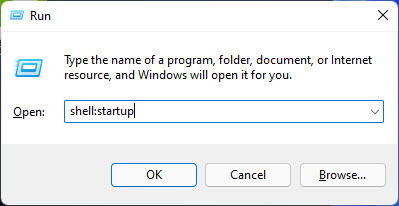
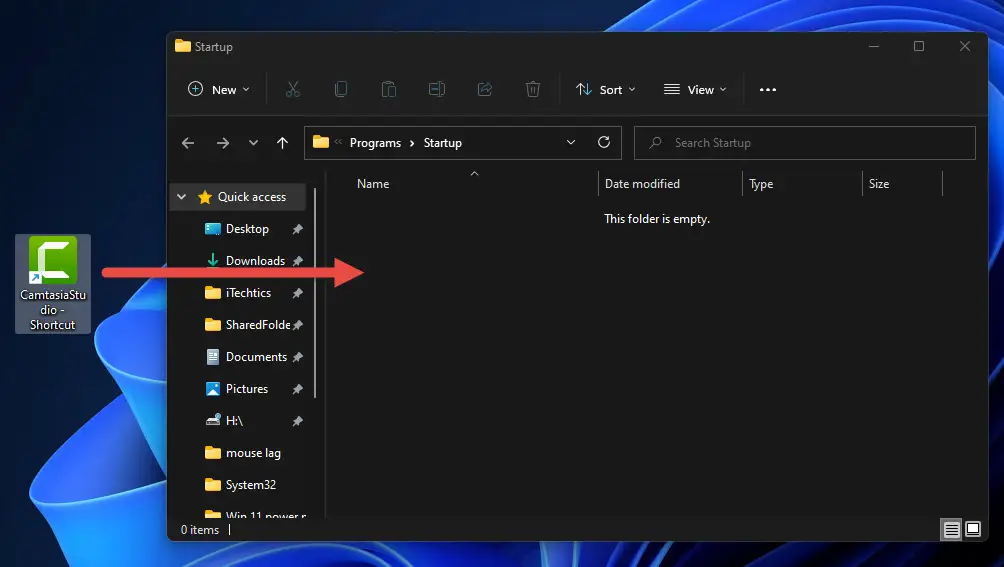
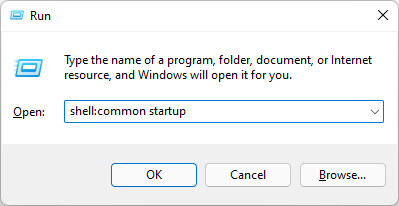

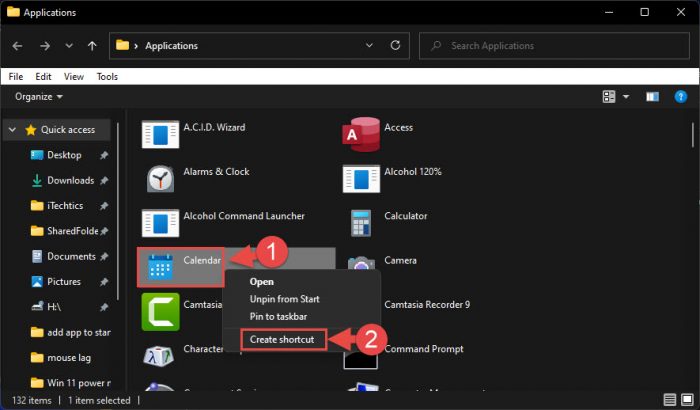






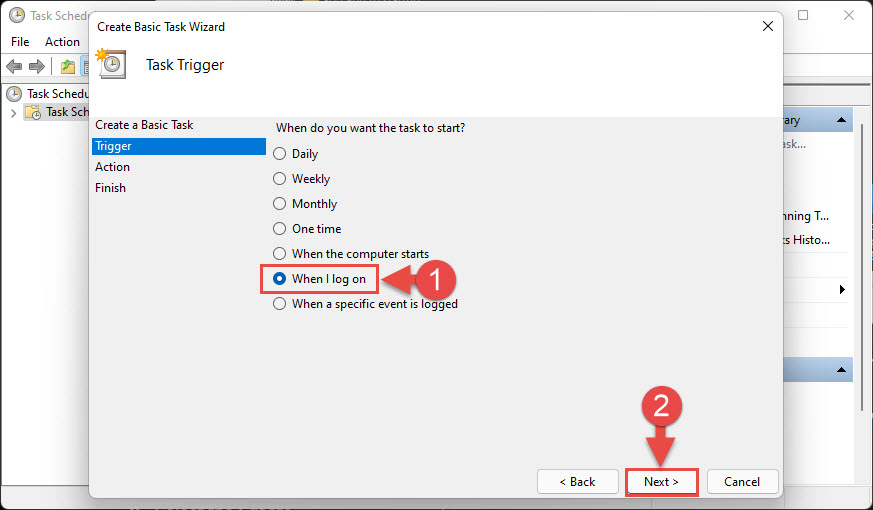



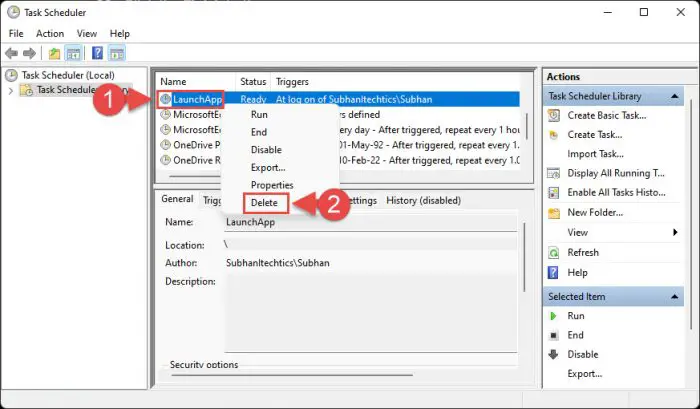
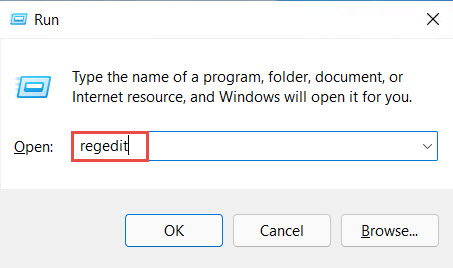
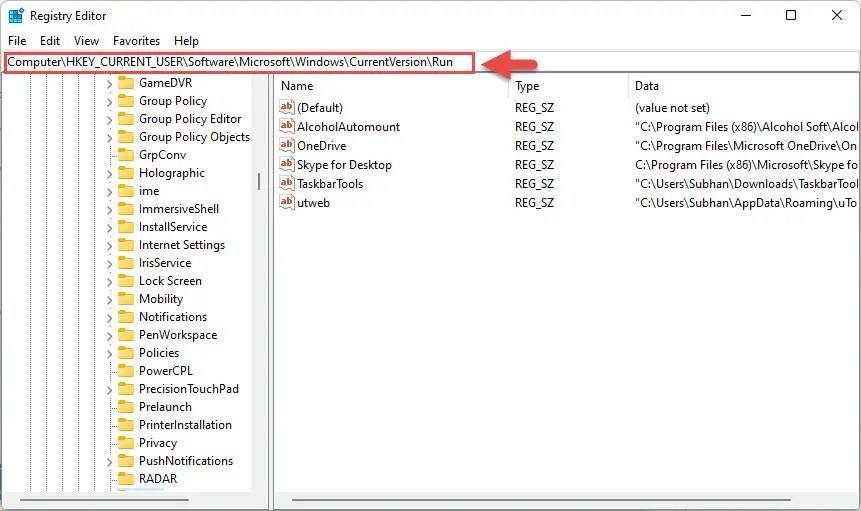




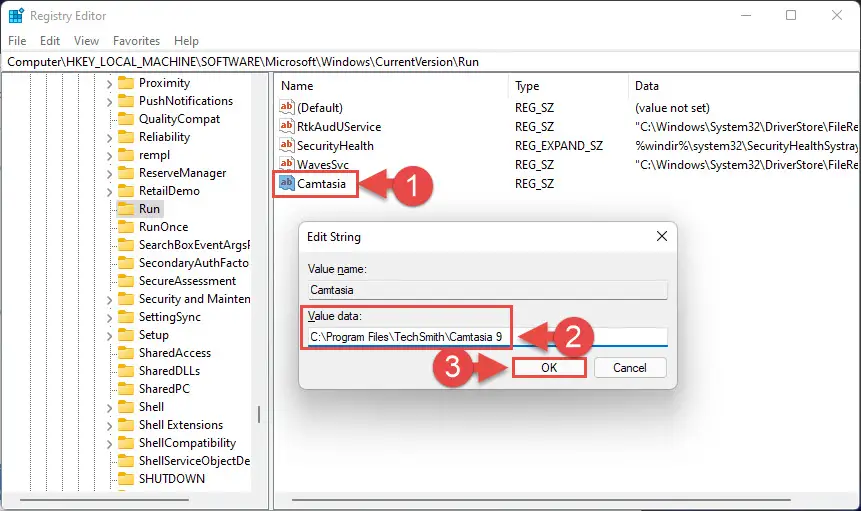




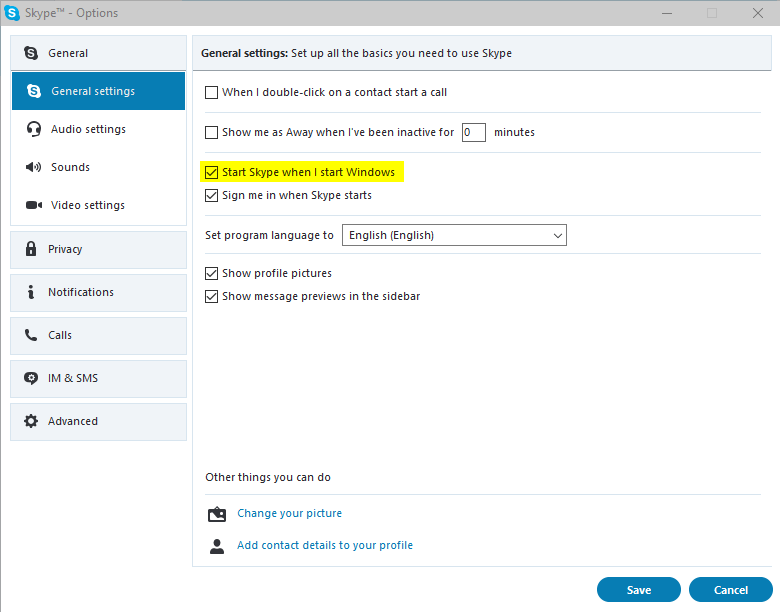
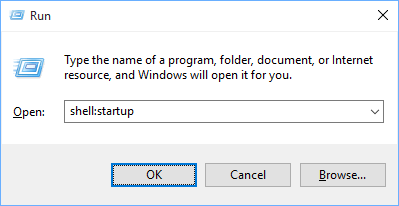
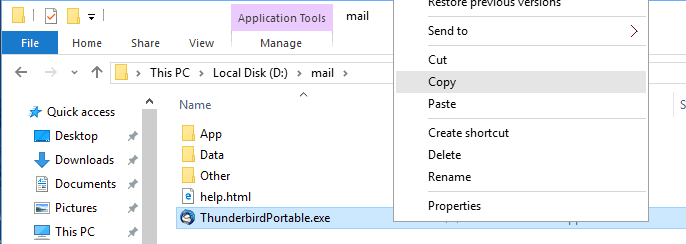
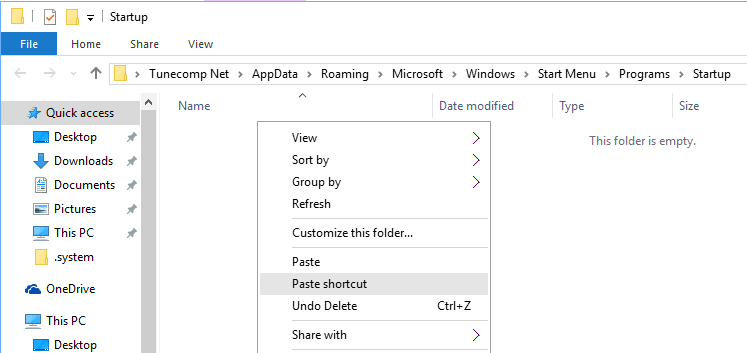

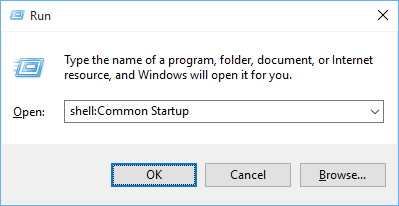

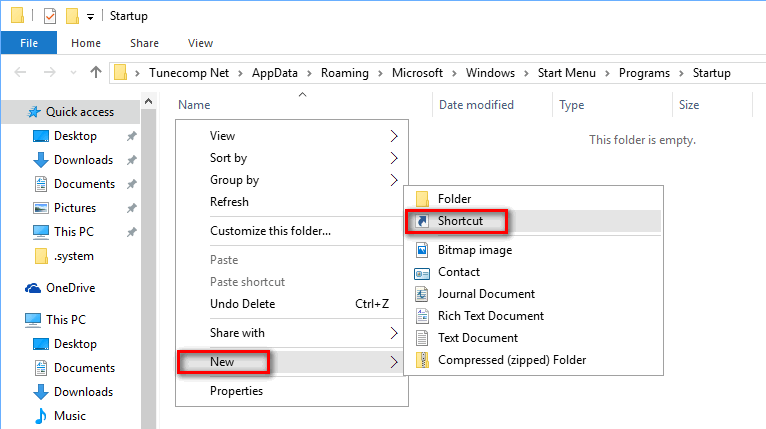
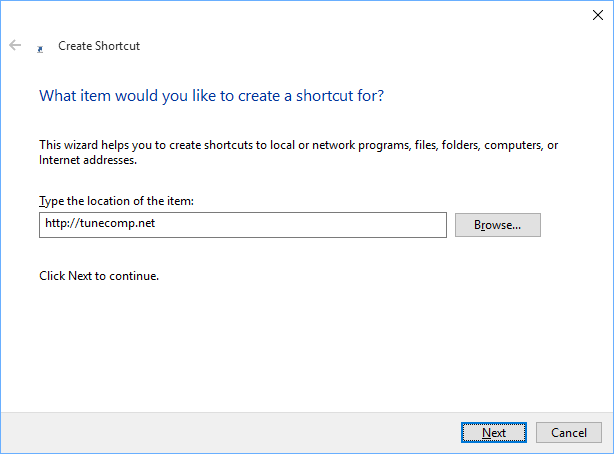
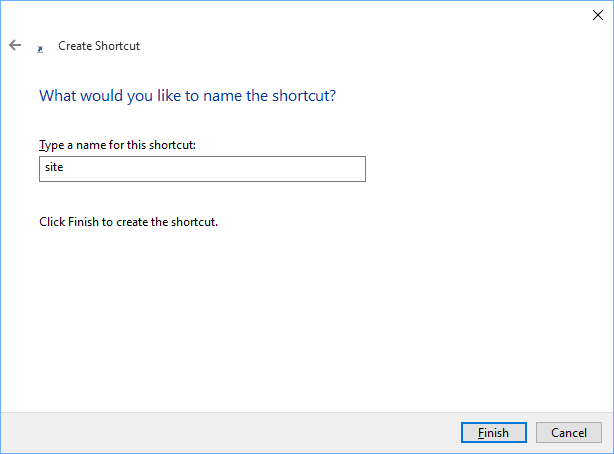
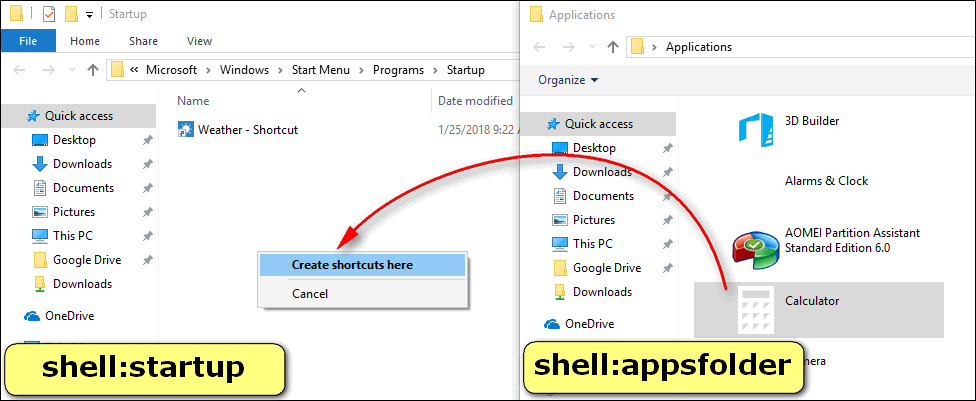
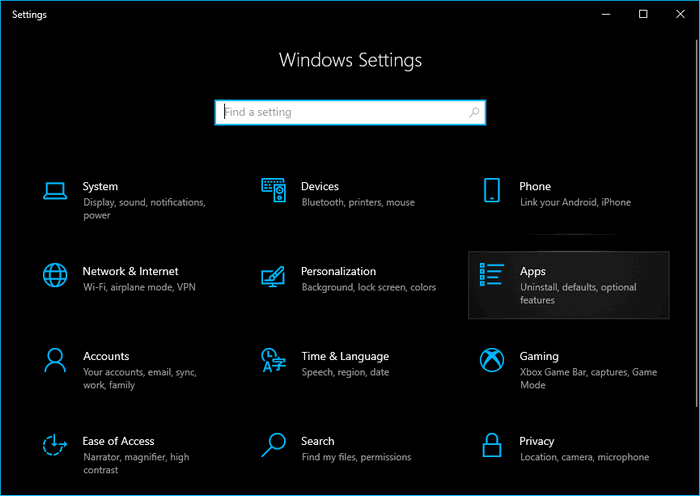
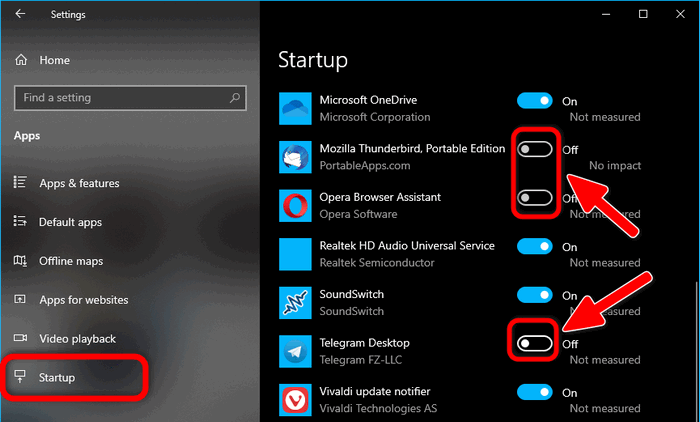
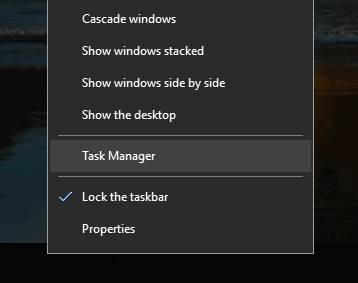
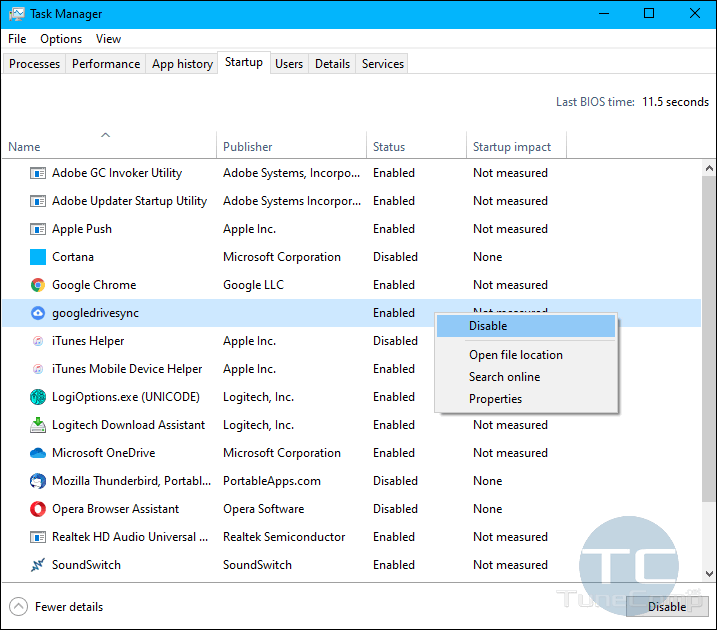
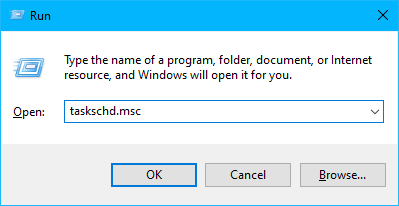
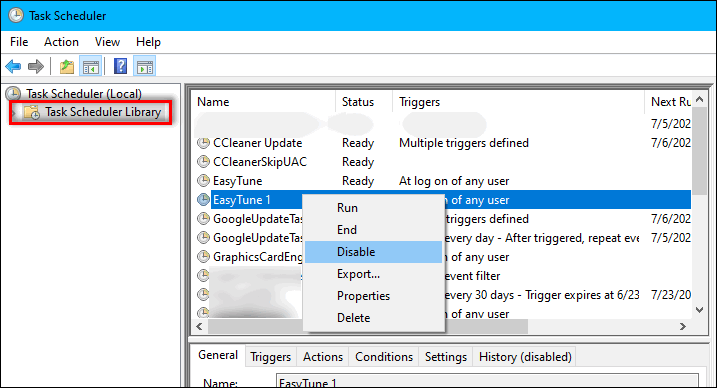
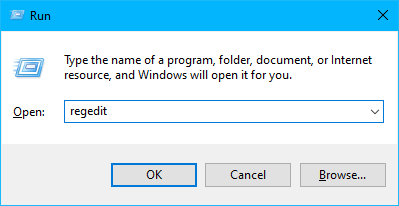
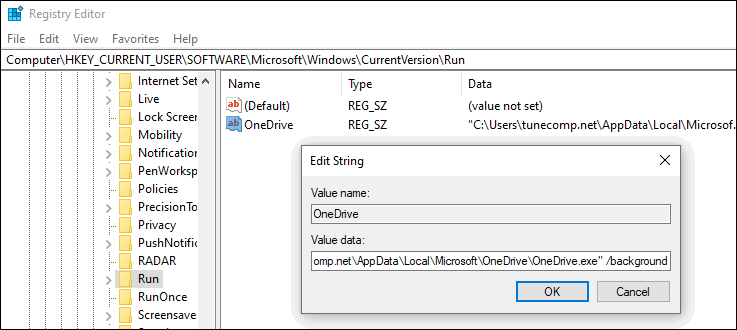
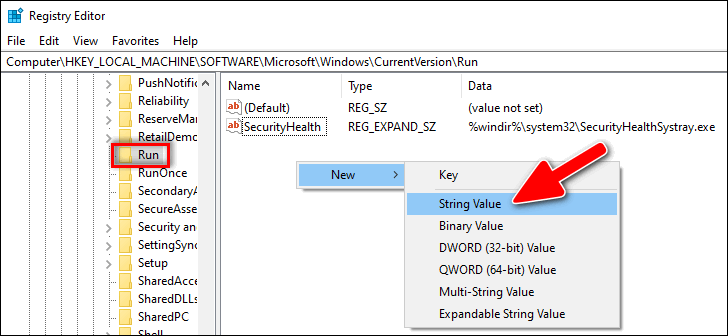
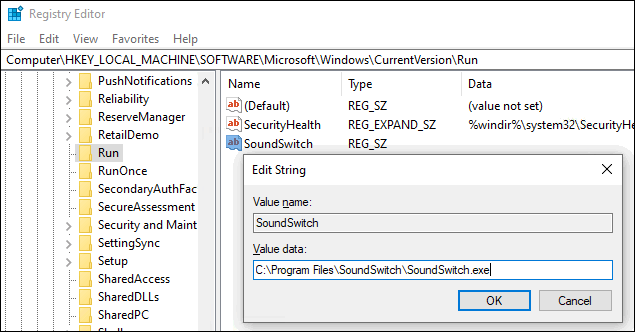
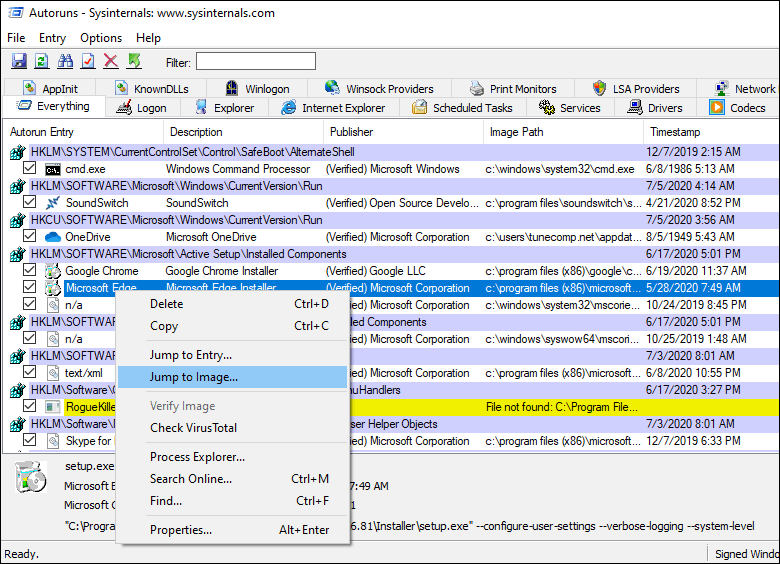
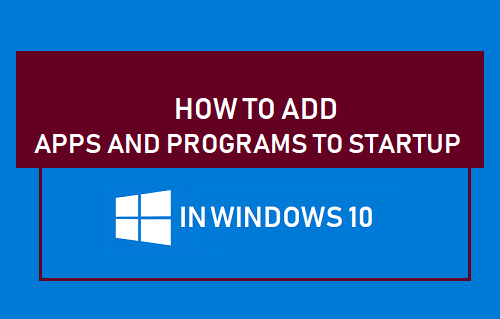
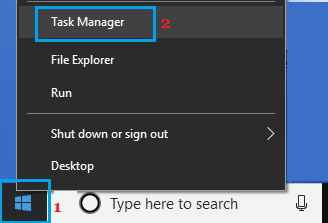
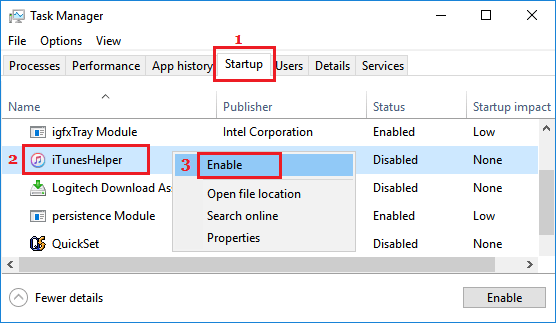
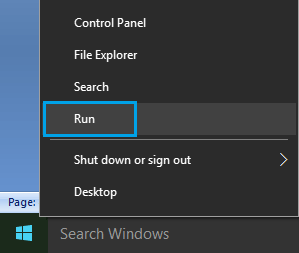
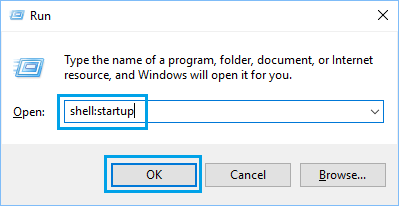
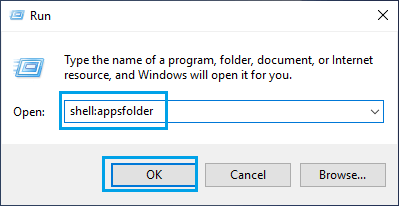

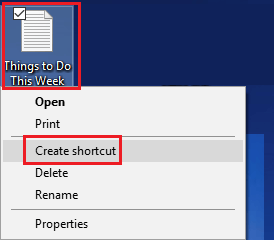
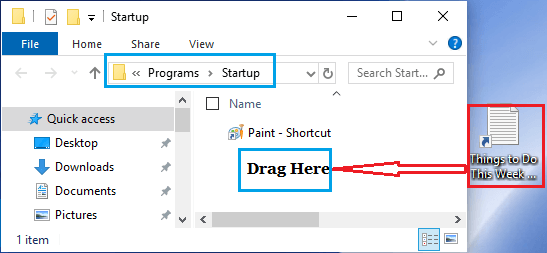
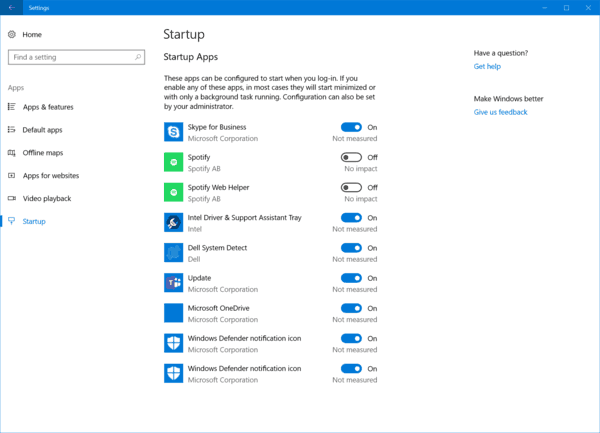
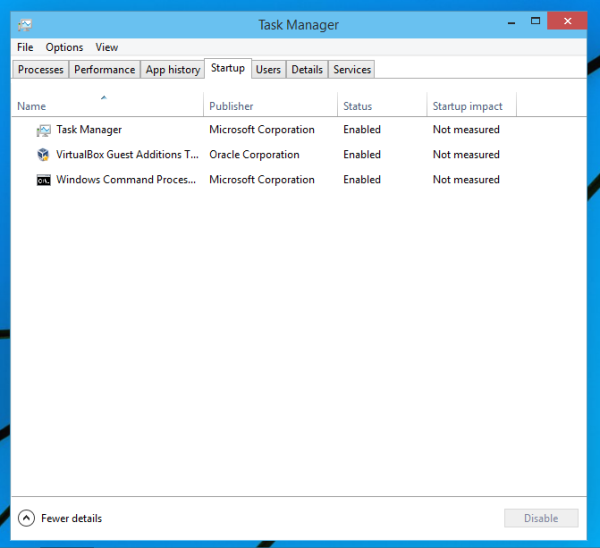
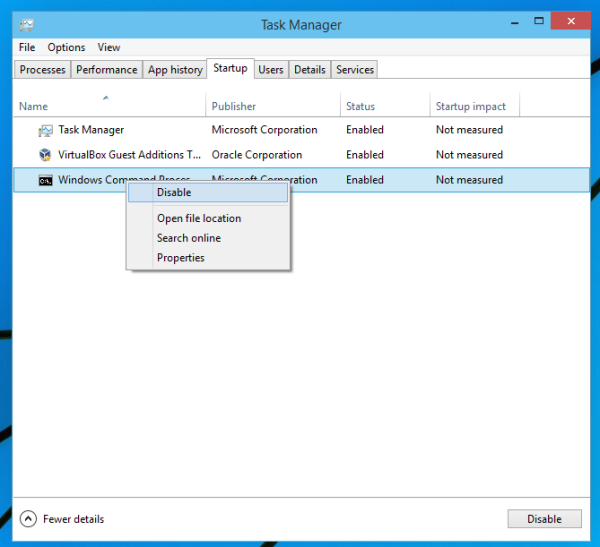
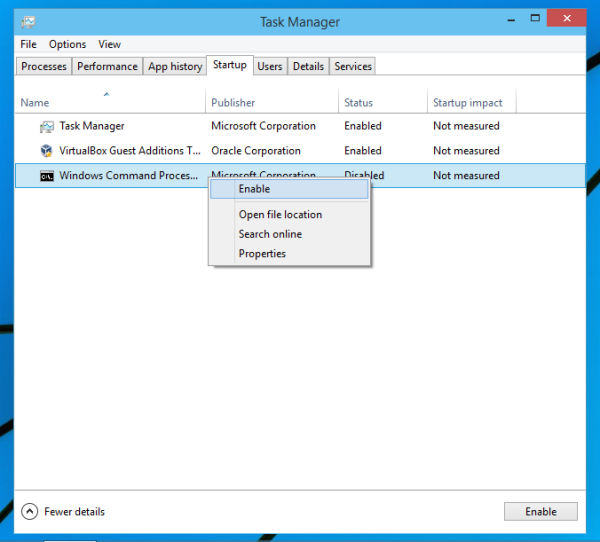
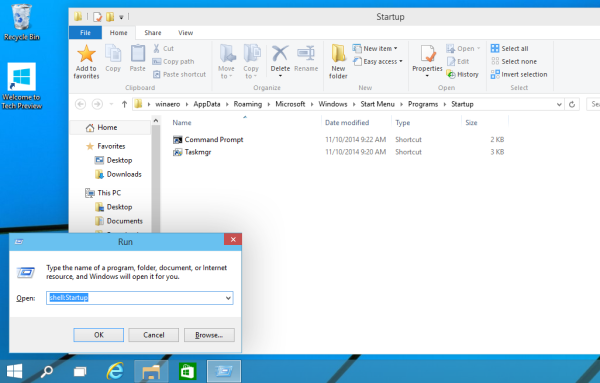
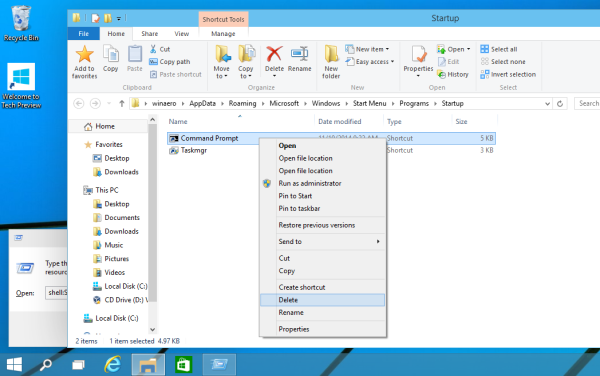
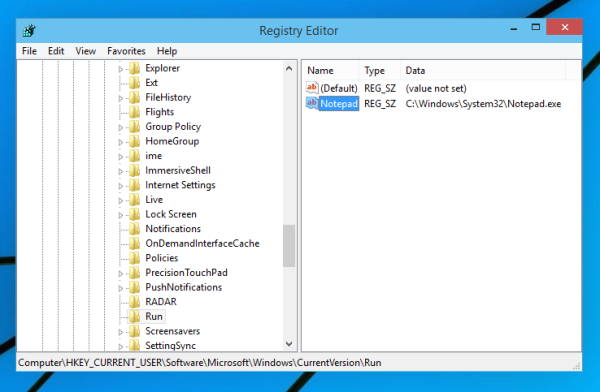
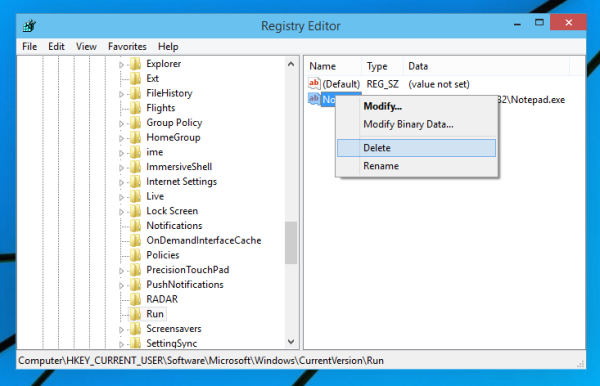 To add a new startup item, you need to create a new string value with any desired name and set its value data to the full path of the application which you want to load at startup:
To add a new startup item, you need to create a new string value with any desired name and set its value data to the full path of the application which you want to load at startup: